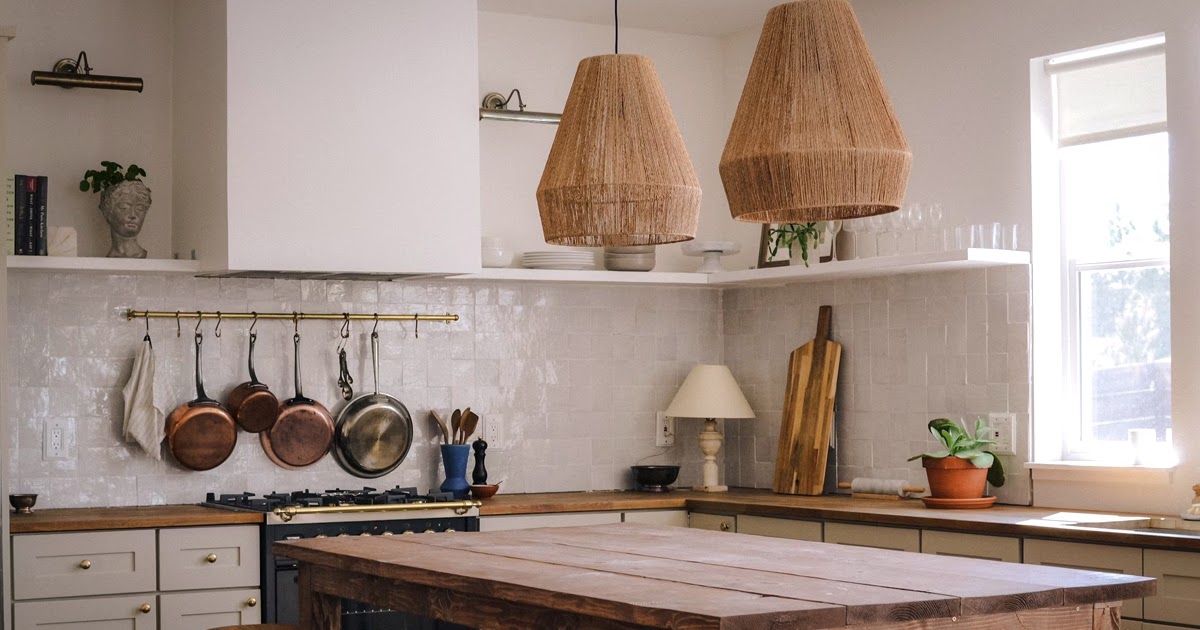
Photo: Sosey Interiors
A little research can save you from costly mistakes. Whether you’re remodeling or starting fresh, knowing what to do (and what to avoid) will help you pick the best options. Let’s get started!
#1. Dos
- Consider Your Lifestyle and Kitchen Usage
Your cooking area isn’t just for show – it’s a space that sees daily action. That’s why your materials should match your lifestyle. If you love cooking and spend a lot of time in the kitchen, your surfaces should be able to handle heat, spills, and constant cleaning.
On the other hand, if easy maintenance is your priority, quartz could be a great alternative. It’s engineered to resist stains and requires less upkeep than natural stone. Either way, choosing materials based on function – not just looks – will save you from headaches down the road.
Photo: charlesdeluvio
- Research Maintenance Requirements
Some kitchen materials demand a little extra care. For example, natural stone counters need sealing to prevent stains. Alternatively, butcher block surfaces require regular oiling to keep them from drying out.
So, before committing to a material, ask yourself these important questions:
‣ How often will it need cleaning or special treatments?
‣ Is it prone to damage from heat, spills, or sharp objects?
‣ Will it still look good after years of use?
Low-maintenance materials, like quartz and ceramic tiles, are great for busy households. But if you’re set on a material that needs extra care, be prepared to follow the right maintenance routine to keep it looking its best.
- Think About Compatibility with Other Kitchen Elements
Your kitchen should feel cohesive. Every material – from counters to cabinets and flooring – should complement each other. A modern, minimalist area pairs well with sleek counters and stainless steel appliances. Conversely, a rustic design benefits from warm wood accents and natural stone.
Photo: Bernie Almanzar
#2. Don’ts
- Don’t Overlook Budget and Long-Term Costs
Price tags don’t tell the full story. Some options may seem affordable upfront but require frequent repairs or replacements, making them more expensive in the long run.
For example, laminate countertops are budget-friendly but can peel or chip over time. Meanwhile, granite or quartz costs more initially but lasts for decades with proper care.
Flooring is another area where cutting corners can backfire. Cheap materials may not hold up to foot traffic, leading to early wear and tear. Investing a little more in durable, high-quality materials can save you from expensive fixes later.
- Don’t Prioritize Aesthetics Over Functionality
It’s easy to get caught up in trendy designs. That glossy white marble might look stunning in photos, but in real life, it can stain and scratch in no time. Similarly, ultra-dark counters may look sleek but can show smudges and dust more than lighter shades.
The same goes for flooring. Hardwood brings warmth to your space, but it’s prone to scratches and water damage. If you have kids or pets, consider options like luxury vinyl or tile, which can mimic wood while being far more durable.
Photo: Callum Hill
- Don’t Ignore Professional Guidance
Your cooking area renovation is a big investment, and choosing materials isn’t always straightforward. That’s where expert advice makes a difference. Professionals can help you compare materials, understand long-term maintenance, and ensure everything works together.
They also know how different materials react to daily use. What looks durable in a showroom might not hold up in real life. So, getting input from professionals means fewer mistakes and better results in the long run.
Final Thoughts…
https://blogger.googleusercontent.com/img/b/R29vZ2xl/AVvXsEjn1wSZzukKx4wMtunb6zXMJxoKPP6CfQDm96HHQfyPPsZl0zzISgrBScUQkzTf7_jizgO9HSlVCkpGEaWQnEhLPByQGpER8n7P_xShtElh7Hvk7_4U8NXa4UfZJFD1EUSEaYsaLccskJVFOBVLAknb_s_qT3q_oUyZrs6HyHyuhavcVzwkEE5TuH1UeyoQ/w1200-h630-p-k-no-nu/lizbreygel-kitchen-renovation-materials-dons-donts-1.jpg
2025-02-11 14:30:00

